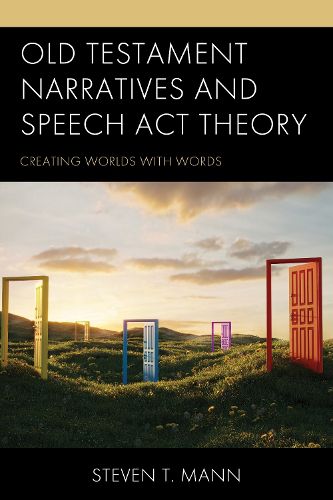Readings Newsletter
Become a Readings Member to make your shopping experience even easier.
Sign in or sign up for free!
You’re not far away from qualifying for FREE standard shipping within Australia
You’ve qualified for FREE standard shipping within Australia
The cart is loading…






Old Testament Narratives and Speech Act Theory explores the creative power of words in Old Testament narratives. While the most famous example of this phenomenon might involve divine utterances such as, "Let there be light" (Gen. 1:1), Steven T. Mann argues that human characters can also create worlds with their words in an attempt to influence the imaginations, and therefore actions, of their listeners. This study focuses on the performative nature of speeches that are found in several key Old Testament narratives, including Genesis 4:1-26; 18:16-33, Exodus 1:8-22; 32:1-14, Numbers 13-14, 2 Samuel 7:1-17, Amos 7:1-6, and Jonah 2:1-10; 4:2-3. The author organizes the study by identifying two basic levels of analysis: the story level (viewing the impact of narrative speeches within the world of the story) and the storyteller level (considering possible ways in which these narrative worlds might impact the world of the audience). Within these narratives, characters use their words to create competing worlds that clash as they attempt to advance their own agendas. The storyteller's portrayal of these narrative worlds invites the audience to incorporate viewpoints of certain characters into their own world.
$9.00 standard shipping within Australia
FREE standard shipping within Australia for orders over $100.00
Express & International shipping calculated at checkout
Old Testament Narratives and Speech Act Theory explores the creative power of words in Old Testament narratives. While the most famous example of this phenomenon might involve divine utterances such as, "Let there be light" (Gen. 1:1), Steven T. Mann argues that human characters can also create worlds with their words in an attempt to influence the imaginations, and therefore actions, of their listeners. This study focuses on the performative nature of speeches that are found in several key Old Testament narratives, including Genesis 4:1-26; 18:16-33, Exodus 1:8-22; 32:1-14, Numbers 13-14, 2 Samuel 7:1-17, Amos 7:1-6, and Jonah 2:1-10; 4:2-3. The author organizes the study by identifying two basic levels of analysis: the story level (viewing the impact of narrative speeches within the world of the story) and the storyteller level (considering possible ways in which these narrative worlds might impact the world of the audience). Within these narratives, characters use their words to create competing worlds that clash as they attempt to advance their own agendas. The storyteller's portrayal of these narrative worlds invites the audience to incorporate viewpoints of certain characters into their own world.